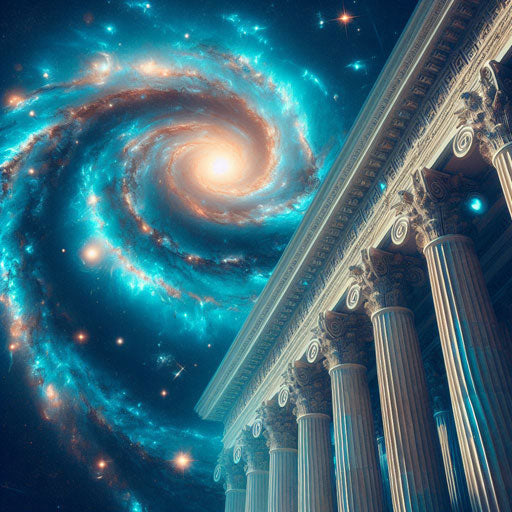Introduction:
Ancient Greece, a realm steeped in mythology and philosophy, bequeaths to humanity a tapestry of cosmogonic narratives that seek to elucidate the origins of the cosmos. From the Hesiodic tradition's epic sagas to the mystical symbolism of the Orphic cosmogony and the philosophical musings of Plato's "Timaeus," these diverse accounts offer glimpses into the profound questions that have captivated human imagination for millennia. In this exploration, we embark on a journey through the annals of Greek thought, delving into three distinct yet interconnected theories of creation. Each narrative, with its unique blend of myth, mysticism, and philosophy, invites us to contemplate the mysteries of existence and humanity's place within the cosmic order.
Contents
- Hesiodic Tradition: The Birth of Order from Chaos
- Orphic Cosmogony: The Cosmic Egg and Divine Emergence
- Plato's "Timaeus": The Demiurge's Architectural Vision
Hesiodic Tradition: The Birth of Order from Chaos
The Hesiodic tradition unfolds the cosmos from Chaos, an indeterminate void embodying potentiality. Chaos births Gaia (Earth), Tartarus (the abyss), and Eros (love), laying the groundwork for creation. Gaia, the primordial Earth mother, mates with Uranus (the sky), birthing the Titans, Cyclopes, and Hecatonchires, inaugurating the divine lineage. This divine lineage undergoes upheaval as Cronus, one of Gaia's children, overthrows Uranus, marking a shift in cosmic rule. Cronus's act signifies the cyclical nature of power and sets the stage for the Titanomachy, a conflict that ushers in a new cosmic order.

Orphic Cosmogony: The Cosmic Egg and Divine Emergence
The Orphic cosmogony unveils creation's mystery through the symbolism of the Cosmic Egg. From Chaos emerges the Cosmic Egg, encapsulating the potential for existence. Phanes, the radiant deity, springs forth from this egg, embodying the creative force of love. Phanes begets the Titans, gods, and humanity, illustrating the generative power inherent in the cosmos. The imagery of the Cosmic Egg and Phanes invokes themes of renewal and regeneration, emphasizing the cyclical nature of creation. Love, as symbolized by Phanes, becomes the driving force behind cosmic generation, imbuing the universe with vitality and purpose.
Plato's "Timaeus": The Demiurge's Architectural Vision
In Plato's "Timaeus," creation is the handiwork of the Demiurge, a divine craftsman who imposes order upon the cosmos. Drawing upon eternal forms and mathematical principles, the Demiurge molds the elements into a harmonious cosmos. The Demiurge's act of creation reflects Plato's belief in the supremacy of reason and the intelligibility of the universe. Creation unfolds as the Demiurge shapes the universe according to ideal forms, guided by intelligence and purpose. Plato's cosmogony extends beyond mythic narrative to philosophical inquiry, delving into the fundamental principles underlying existence and the nature of reality.

Conclusion: Greek cosmogony, with its rich tapestry of myth, mysticism, and philosophy, offers us a window into the profound questions that have captivated human thought for centuries. From the epic narratives of the Hesiodic tradition to the mystical symbolism of the Orphic cosmogony and the philosophical insights of Plato's "Timaeus," these theories invite us to contemplate the mysteries of creation and humanity's place within the cosmic order. As we unravel the threads of these ancient cosmogonies, we embark on a journey of discovery, guided by the wisdom of the ancients and the enduring quest for understanding the universe and our place within it.

